Jolie ZHOU&JIN Qiaoer: 3……2…1
| May 29, 2024
Frequent bodily movements within urban space bring about spatial transformations and make certain objects simultaneously serve as mediums for conveying and obstructing human emotions. When suppressed emotions reach a critical point, detachment and violence begin to manifest in the space.
3……2…1, he murmured.
3
The man glanced at his watch ten times within a minute. Not a digital one, but a quartz. Every second mattered; precision was imperative.
Damn, almost going to miss the flight.
The gentleman in front struggled to load the boarding pass QR code on his phone. The staff at the boarding gate wore a forced smile.
“Sir, would you like to connect to the airport WiFi?”
The fallacy of technology lies in the assumption that inventors and users share a subconscious belief that everyone operates on the same cognitive level when using a particular technology. Then, we stumble upon our separate differences and adjust psychologically to deal with the gap between the expectations and reality. Zero expectation makes a better life. “Let go of unrealistic ideals of the perfect human,” he murmured.
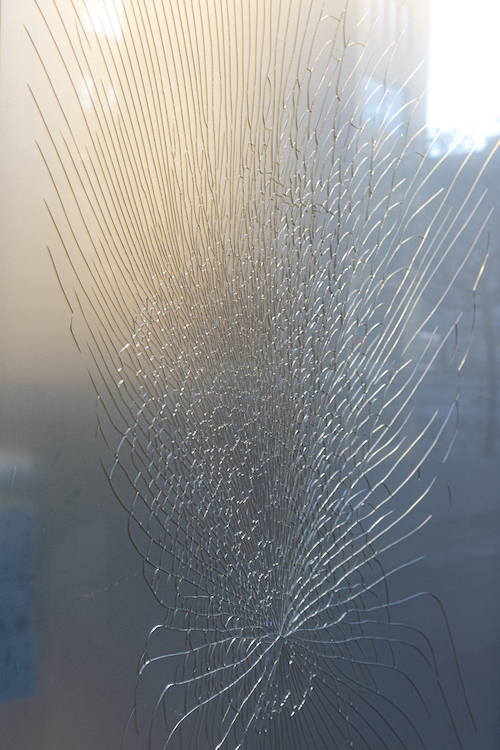
Whoosh… swoosh swoosh. The staff pulled up the guardrail behind him.
He briskly entered the transparent corridor. When he reached the cabin door, sunlight pierced into his eyes through the glass of the control room. The injured pupils couldn’t contract. He let it sting, a quasi-masochistic act to relieve the anxiety of waiting.
Pure white light. In the blink of an eye, the flight attendant with a professional smile appeared in front of him.
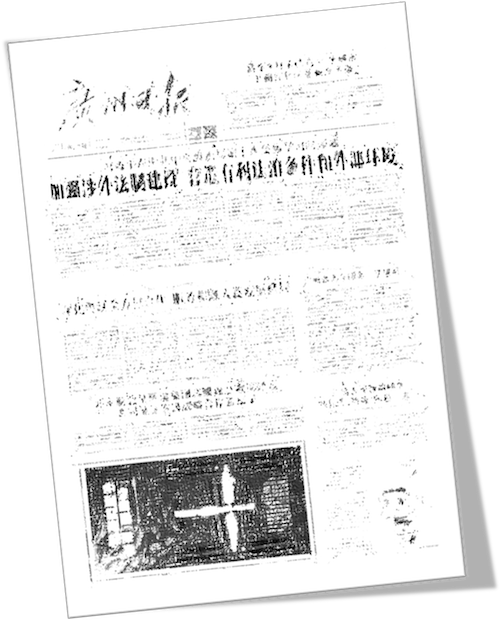
“Sir, would you like today’s newspaper?” The flight attendant asked softly.
“…” Ignoring the smiling face, he took a copy. Intellectuality in the subconscious was at play.
He glanced at it with indifference, then rolled it up and tucked it into the miscellaneous bag behind the seat.
The wait for takeoff always felt long, as if all the anxiety just now went in vain. Bored out of his mind, he began to scrutinize everything in front of him.
He noticed a mysterious metal clip on the back of every seat on the plane. Its purpose was unclear, but the only thing he knew for sure was that it wasn’t for fixing the small tray. However, only the clip in front of him held a worn-out mini-folded booklet. He took it down to read it with interest, without noticing anything unusual about the clip.
The folded booklet had a texture of peculiar material, resembling thick thermal paper. The graphics and text had become blurred due to time.
The folded booklet was an instruction manual for the clip on the seatback, he assumed. A hint of excitement and anticipation filled him as he turned the clip’s lever to 90 degrees, counting down in his heart, three, two, one, and then released. However, instead of a crisp click as expected, the lever closed unusually slowly—not sure if it was because of the rust or some kind of hydraulic structure inside. The slow closure of the clip became irritating — the pre-collision movement was transformed into slow-motion and muted the sound upon contact. Sluggishness became a way of hiding, manipulating and consuming all impulses in the shadows, striving not to be noticed.
He stared at the clip, his vision narrowing down.
Things around him gradually slowed down.
Light interwove into a curtain.
A dark, frosted surface, of fine, even grains;
A shadow flickers, rushing towards the surface. The moment they touch, all movement halts abruptly; on the surface, a pointed oval shape appears, resting upright in equilibrium. The indeterminate entity remains unmoved, with only the shadow it casts indicating the existence of time.
Fast forward.
The outline of the contacted area sinks, and the surrounding grains of the frosted surface liquefy; the surface engulfs and devours the object silently, unobtrusively, tracelessly, like sinking sand.
A cadet grey background with a cluttered pale green lower half;
At the centre, another ellipsoid, a gigantic one, free falls at a high speed. Smoke trails up its spine, followed by its reticent disintegration shrouded in the smoke. Within seconds, all submerge into the pale greens.
Inside the greens, debris strikes the ground, with sands being tossed into the air in full bloom that soon dissipates into the dusty haze. Interlocking branches and leaves trap the billowing dust, cloaking the tumult and its aftermath. As dust rests, it veiled the wreckage layer by layer, absorbing it into the body of the land.
Cadet grey background with a cluttered pale green lower half;
Muted moans in washed-out tones.
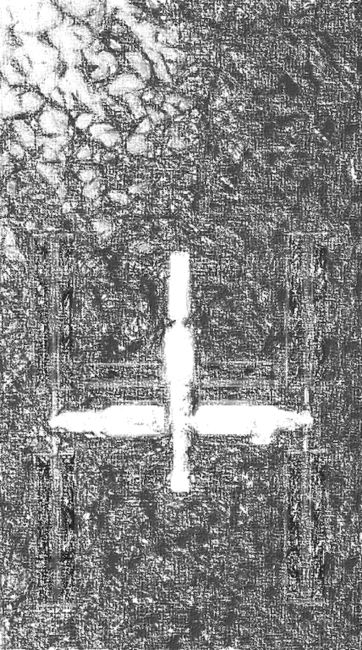
He suddenly opened his eyes, scanning the surroundings eagerly, hoping to locate the device from the instruction booklet. He never anticipated craving such a simple mechanical structure, yearning for that sharp rebound, that crisp click; nor did he imagine it could serve as a vent for release.
The longer he stared at the clip, the more fascinated he became — he sensed that some unfamiliar and complex emotion was about to erupt. He took a deep breath. He forced himself to turn his head to look at the oval window, even though his eye movement did not sync with the motion of his head. Pure whiteness invaded his pupils as he gazed at the sunlight. He fell into calm again.
Perhaps this manual was indeed about the clip on the airplane seat, but its design had been replaced by a version that can’t make any sound.
Or perhaps the designer envisioned that this device wouldn’t survive rapid updates and iterations. Its physicality and its mechanical movement, entwined with some form of emotional release, would all vanish or be covered, like the images on thermal paper.
It came to his mind that someone said, human desires are constantly changing, thus the functions of objects will continuously be re-created. If the designed object is an extension of a biological organism, then it will evolve according to human beings under the Tree of Life. Whoever the creator is, someone else will redesign its function .
2
Through the small window covered with fingerprints, he saw the city glowing unusually. But not knowing why.
When getting off the plane, he carefully observed the expressions of each passenger. No one seemed as dissatisfied as he was. Who cared about this unnecessary clip? It seemed natural for it to be there. Yet, it disturbed him.
He was eager to leave the airport, even though his destination was uncertain. He pushed the glass door to the arrivals but it moved unusually slowly. He pushed a little bit harder but felt a resistance. Passing through the buffer zone, he exerted more force to push another door, nearly pressing his entire body weight against the delicate glass. However, the door remained slow. As soon as a gap of around 50 centimeters appeared, he sidled through. The ineffective and absurd struggle made him more irritable and weary. He sighed and looked around. He saw that doors at other exits were opening and closing at the exact same sluggish pace. He realized that the speed of the doors had nothing to do with how hard he pushed.
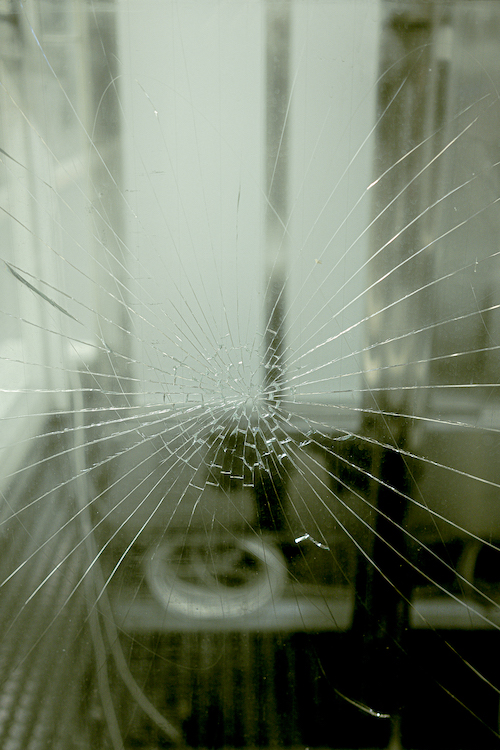
He finally left the airport. He wandered in the streets, observing everything that looked familiar yet strangely surreal. He looked down at his hands, and the blood vessels in his arms were hidden in the cold light. Looking up, he saw countless beams of light refracting between the glass, the light cold and bluish. Except for the absence of warm direct sunlight. Shops, residences, schools, companies, government offices… all facilities were made of glass.
All opening and closing movements were slow and silent. Doors and drawers were equipped with hydraulic levers, as if any excessive impact would cause this fragile-looking glass city to collapse.
In the distance,
bang … bang … bang …
A continuous sound.
He traced the sound to its origin and came across one glass wall after another with broken traces. Despite the safety glass being as solid as a stone wall, any vandal’s furious assault would leave behind no improper debris but only the emotional contours.
Transparent network-like cracks captured everyone who looked at it or tried to record it, adding a fractured texture to reality.
But he didn’t understand why there were so many damaged glass facades in the city. He pondered, looking up and around. The sky was surprisingly clear. There were no surveillance cameras here. Not a single one. After all, such transparency and brightness had long buried the darkness.
Perhaps creating cracks was the last outlet for the residents in this city. All kinds of cracks had become the city’s skin.
Eventually, he halted before a distinct crack. Through it, he observed the superimposition of his face, the cityscape behind him, and the serene, inviting hotel lobby visible through the glass. Running his fingers over the fractured yet smooth surface, he fixated on the red sofa inside. It was from such a close gaze that the glass gradually seemed dissolved. In that moment, the distinction between himself and the world on the other side of the glass silently faded away, leaving the boundaries indistinguishable.
Rays of reflected light start to intersect and overlap. Anxiously, he shifted his pupils, finding nothing but white. All white.
The familiar stinging sensation hindered his movements. Instinctively, he raised his hands to shield himself from the white light, but his skin slowly turned transparent, exposing blood vessels and bones.
Nowhere to hide.
1
The morning sunlight poured through the expansive floor-to-ceiling windows, illuminating every corner of the studio. Startled, he awoke at his desk, shook off the daze, and realized he still held a pencil in his hand. The architectural blueprints in front of him were countless stacks of *.
He rose from his seat and cast a quick look at a reference book with a newspaper cover on the desk.
It was a collection of aged guides, focused on expressing emotions through objects.
Hidden violence. Fervent persistence, and manageable outburst.
Only then did he realize how ironic it was to vent systematically. Wrapped in the guise of freedom, release, and unabashedness, the transparency erased the boundaries that indicate transgression, and suppressed everyone who immersed in it.
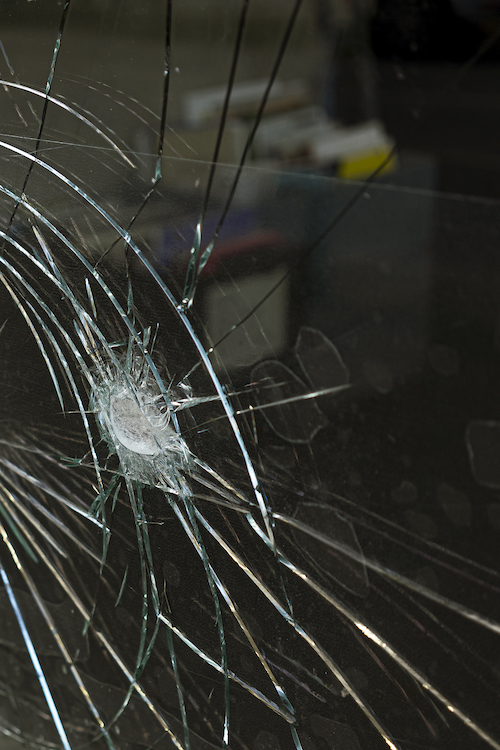
He casually picked up a compass on the table, raised his arm to a 135°angle with his body, and smashed it into all the transparent surfaces in front of him. Willingly accepted the fate of items being destroyed and reshaped. Emotions long suppressed found expression on the glass, creating cracks that now resembled the intricate patterns of stained glass in a cathedral—an aesthetically pleasing sight. Simultaneously, these fractures wove a delicate veil, affording him a semblance of privacy and a chance to reclaim a breath of relief.
*Note: The Necker cube is an optical illusion that was first published as a rhomboid in 1832 by Swiss crystallographer Louis Albert Necker. This image consists of 12 lines, depicting a cube with an isometric perspective. Regardless of their distance, parallel lines of equal length are drawn as equal-length lines in the image. There is no information about the three-dimensional aspect in the drawing.
.
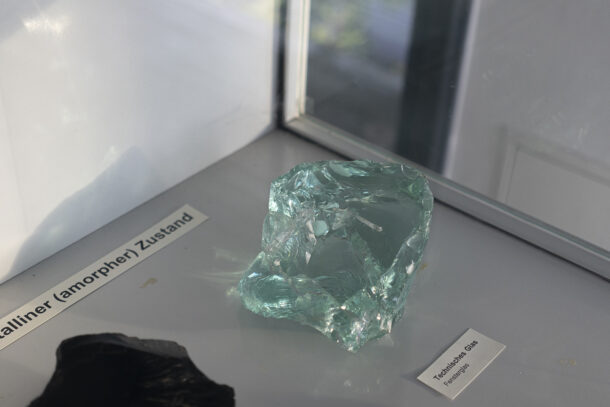
金巧儿 JIN Qiaoer
(b.1996) focuses on the structures that are autonomously generated according to their environment; has a keen interest in objects whose functionality has been redefined or spontaneously reconstructed. Her works delve into the subtle off-ness, incongruity, or disjunction of objects in everyday living spaces, thus uncovering the contradictions they reflect.
肘力 Jolie ZHOU
was born in 1994 in Guangzhou, China. Her concerns mainly lie in how everyday life landscapes influence the human mind. Her practice involves experimental mediums of photography, as well as experimental writing centred on multispecies perception and consciousness. She is now studying in the postgraduate program at the Academy of Media Arts Cologne.
Translated by Min Pan
This text is a collaborative work by Jolie Zhou and Jin Qiaoer. The Concept and design of the user guide come from a currently unnamed ongoing project of Jin Qiaoer; the writing concept and photography are from an ongoing project temporarily titled Pass by Me, Penetrate Me, Destroy Me by Jolie Zhou.


